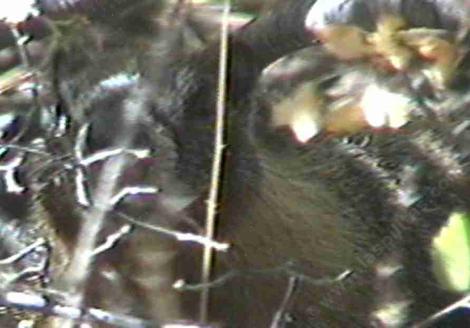Lodgepole Pine Forest
see also- Habitats
Annual rainfall:
35-60 inches of precipitation
Common Animals
Chipmunks, Squirrels, Marmots, Wolverine, our buddy the badger, Pika, Bobcats and many other transit species
Common Plants
Abies concolor, Achillea millefolium lanulosa, Arctostaphylos patula, Juniperus communis saxatilis, Monardella odoratissima, Penstemon bridgesii, Penstemon heterodoxus, Pinus flexilis, Lodgepole Pine (Pinus Murrayana), Pinus washoensis, Symphoricarpos vaccinioides, Jamesia americana californica.
Soil and climate notes:
Shallow rocky soils usually on granite. Soil pH ranges from 6 to 8, usually around neutral. This is a community like Los Angeles, most everyone wants to move from it, few want to move to it. This community is under siege by Bromus species though. When Bromus (small weedy foxtail type grasses) invades the site is much more fire prone. Lightning strikes that would burn 100 sq. ft. run and burn a 1000 or more acres.
In California this plant community exists at a subalpine level on shallow soils where the wetter spots are meadows. In the areas that are a little drier the Lodgepole Pine (Pinus murrayana or P. contorta ssp. murrayana) thrives along with Wild Currant or Gooseberry (Ribes species) and other shrubs, and in even drier spots plants like Bridges' Penstemon (Penstemon bridgesii or P. rostriflorus), Western Pennyroyal (Monardella odoratissima) and Sulfur Buckwheat (Eriogonum umbellatum) survive.
Elevations are commonly from about 6000 feet to 12000 feet. There is not much snow cover, as in lower elevations, so the temperatures can fall very low. The trees often grow in very dense stands of small-trunked trees, or as scattered individuals that are much more 'Christmas -tree' like.
Areas where Lodgepole Pines have been left alone are dense, hard-to-walk- through forest thickets of trees.
Some of the areas of the Lodgepole Pine Forest plant community have almost no understory (where the trees were very dense), and when they were clear cut, there isn't much there years later. (Hey, in this photo they missed a few trees!)
The Lodgepole Pine Forest plant community has been clearcut in many areas, leaving a few trees here and there, and allowing other species of trees like Jeffrey Pine (Pinus jeffreyi), Western White Pine (Pinus monticola), Firs (Abies spp.) and sometimes Mountain Hemlock (Tsuga mertensiana), to gain a foot hold. In this picture Greenleaf Manzanita (Arctostaphylos patula) is providing cover for the pines, to start a new forest.
> You want to recreate the forest edge in your yard, which is where most of the plant diversity occurs, not the dense inner part. Many of the plants from the Lodgepole Pine Forest plant community grow well at lower elevations, but if you have summer heat, they'll need shade where the temperatures are cooler. They all need good drainage and most do not like wet feet. The plants that grow in wetter spots, like Sierran Penstemon (Penstemon heterodoxus) and Mountain Yarrow (Achillea millefolium or A. lanulosa), love 'English garden' conditions.
A yellow-bellied marmot might watch you as you hike in this plant community. He looks like a fat squirrel crossed with a rabbit. Late in summer he gets fat, chunky and too lazy to run away from a fat, chunky photographer.
Plants
A list of California native plants that grow in the Lodgepole Forest plant community.







